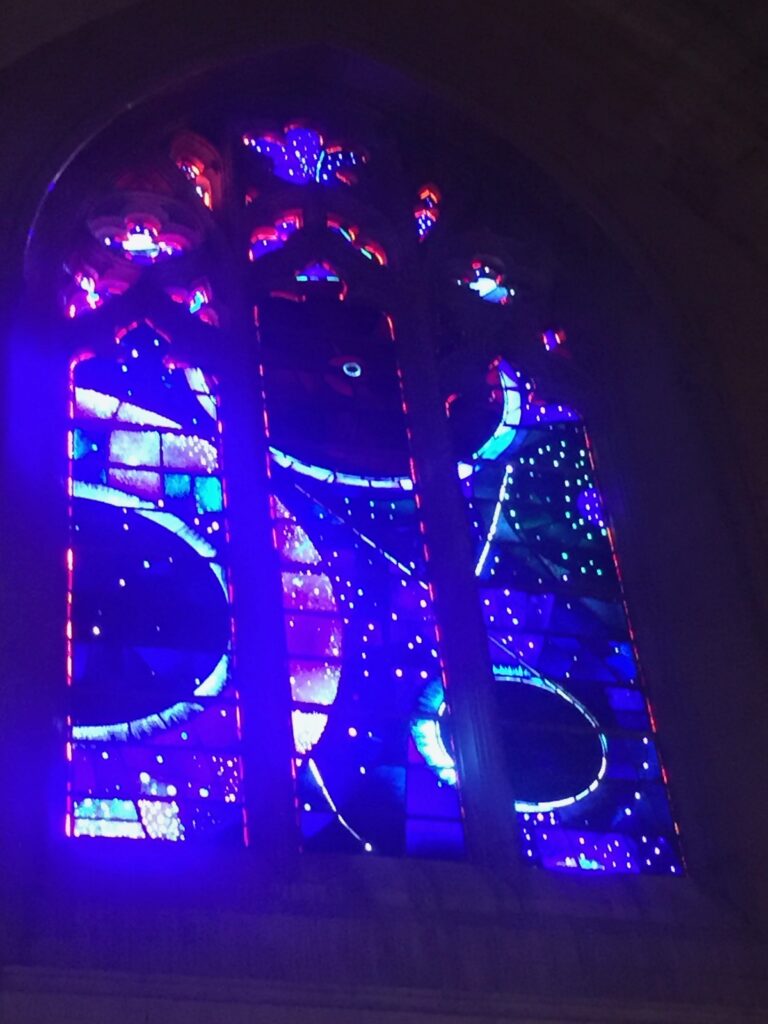
Snipping out little rectangles of paper past midnight on the last night of November, I wondered if my mom had done this too. She was probably more organized, but I also knew she had her moments of last-minute adjustment.
I was making the clues for each day of my children’s Advent Calendar. The calendar itself is cloth and hand-sewn by my mom. Pulling each one of the paper slips and doing the activity on it is one of the rituals in our house that mark special occasions. Growing up, I never thought that I participated in any rituals. But looking back, I realize that there were many we honored and that I’m glad to continue as a parent.
In white American culture, the word ritual is usually associated with religion, not secular settings or even in the home. Even many American churches have dropped the “smells and bells” of the more formal Catholic and Episcopalian services.
But I like a broader definition of the term. While a tradition is just “a thing you do because you’ve always done it,” a ritual has deeper meaning. I find the definition that Ashia Ray shares in their Winter Incubator program particularly helpful. Rituals provide a chapter break in life, a time that recognizes a separation between the ordinary and the sacred. They tie us to the past and the future, passing experiences along from our ancestors to future generations.
Recognizing the role of ritual in our lives can help us remember our values and where we come from. I was reminded of that recently when I had the honor of attending the Bar Mitzvah of my friends’ son. Seeing him take on the responsibility to become part of the larger Jewish community was so moving.
Unfortunately, few of my family’s rituals come from the European cultures either of my husband’s or my family descends from. The English obliterated many of the Irish traditions on my husband’s side, so much so that my mother-in-law wasn’t even aware of how much until she visited Ireland. (She was quite upset when she found out.) Trauma and assimilating to whiteness in America erased most of the rest. On my side, my grandmother’s maintenance of Polish traditions were mainly limited to cooking. These days, the only cultural remnants are my mother-in-law and husband baking Irish soda bread for St. Patrick’s Day and me buying peroigies from the Polish grocery.
Instead, the rituals in both my husband’s and my families were traditions that transformed into ritual over time. I don’t think our families ever really intended them to be rituals. (This came out in the number of times my mother-in-law tried to convince her kids to celebrate Christmas in Disney World and her kids rejected it vociferiously.) Instead, certain experiences gained weight and significance from repeating them over and over again in the context of love and togetherness.
For me, most of these rituals are associated with sensory experiences. Watching the flames as we light candles in church. Drinking hot chocolate around the fire. Feeling the wind on our faces as we cut down a Christmas tree. Tasting the elaborate birthday cakes my husband makes. Pulling weeds to prepare the garden in the fall for the coming spring. That sensory aspect cements them in my mind and body, connecting the event and the feeling it provides. They are particular periods in time, set aside to be special.
They are also connected to the passage of time. In American society, most people spend most of their time indoors. It’s easy to feel disconnected from the seasons and passing of time. Rituals remind us of those turning seasons, along with the responsibilities and celebrations associated with them. Picking pumpkins at the local farm. Planting seedlings in the garden. Celebrating the summer solstice. Photos on the first day of school.
As for the Advent Calendar, it’s like a ritual of rituals. Each morning, my kids pull out one of the little paper slips and read the slightly clever clue I’ve written. Each slip reveals that day’s activity, ranging from seeing the lights at the local botanical garden to making paper snowflakes. Not all of them go as planned or are universally loved – I get a lot of complaints around saying Advent prayers – but they nonetheless are valued.
Both the physical form of the calendar and the action of it connects us with previous generations. My mom made the calendar and did similar activities with me. Many of the activities are drawn from similar things my husband did with his family. While some of the activities are limited to our nuclear family, many connect us to the community and extended family, from attending our church’s Christmas Eve service to making gingerbread houses with my parents.
In trying times, rituals are more important than ever. They can strengthen our connections with friends, family, and community. They pull us away from the everyday grind of getting shit done, allowing us to stop and consider our larger place in the world. They imbue meaning that our commercialist, consumerist society tries to strip away from us.
So as we move through these seasons, identify the traditions that are truly rituals in your life. Abandon the ones that you do merely for the sake of it – we don’t have time for meaningless nonsense these days. But if it does have meaning, if it does offer connection, hold onto it. Respect it. Celebrate it. We need all of the joy, wonder, and connection we can get.
One way you can support your local community is to stand up with vulnerable people. Immigrants and refugees are being heavily targeted. Find out how you can help with the Immigrant Legal Resource Center, United We Dream, or your local immigrant and refugee resource centers.